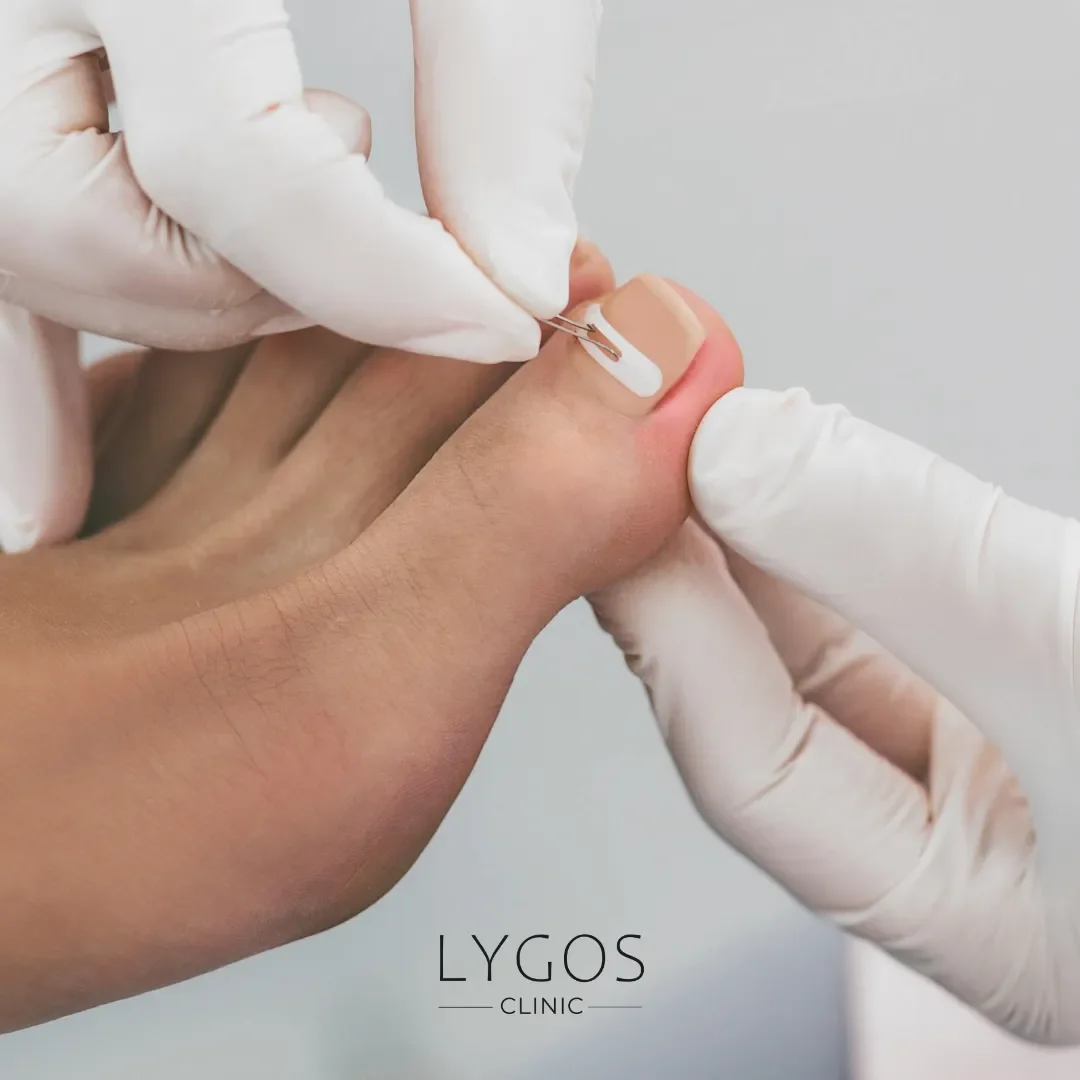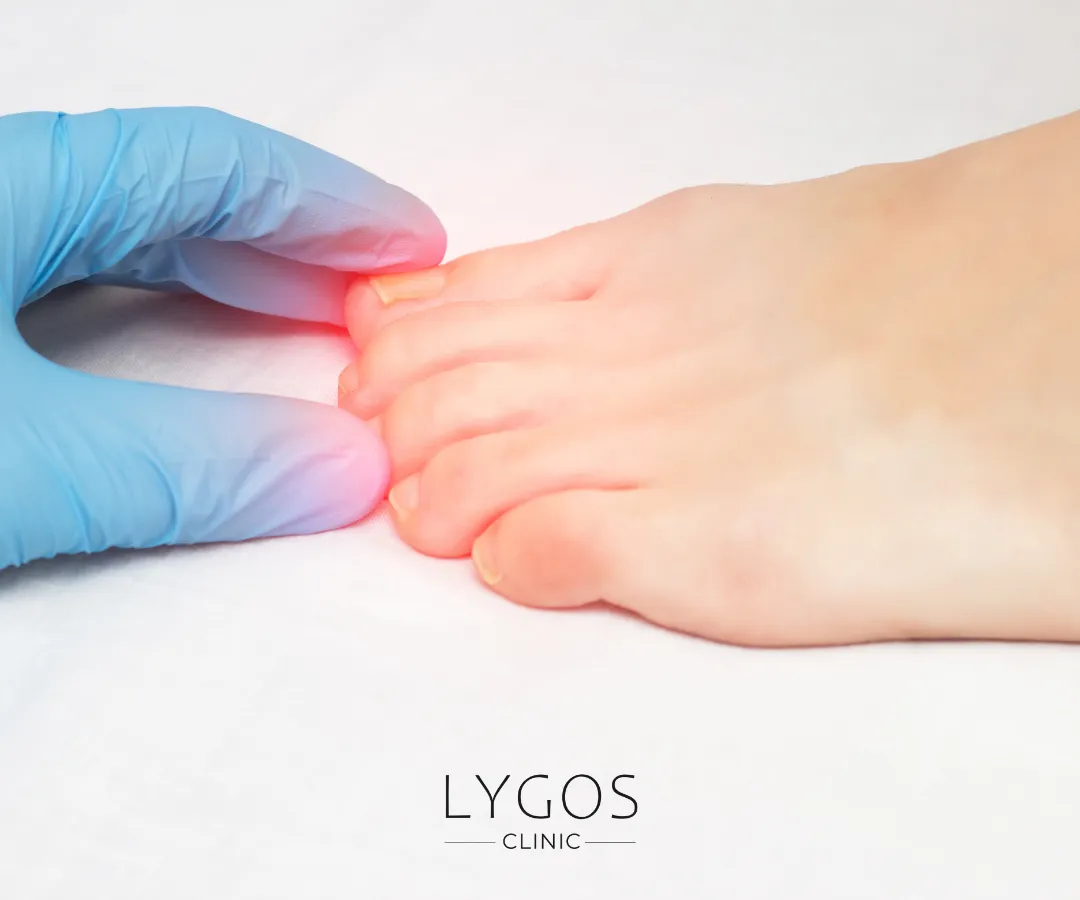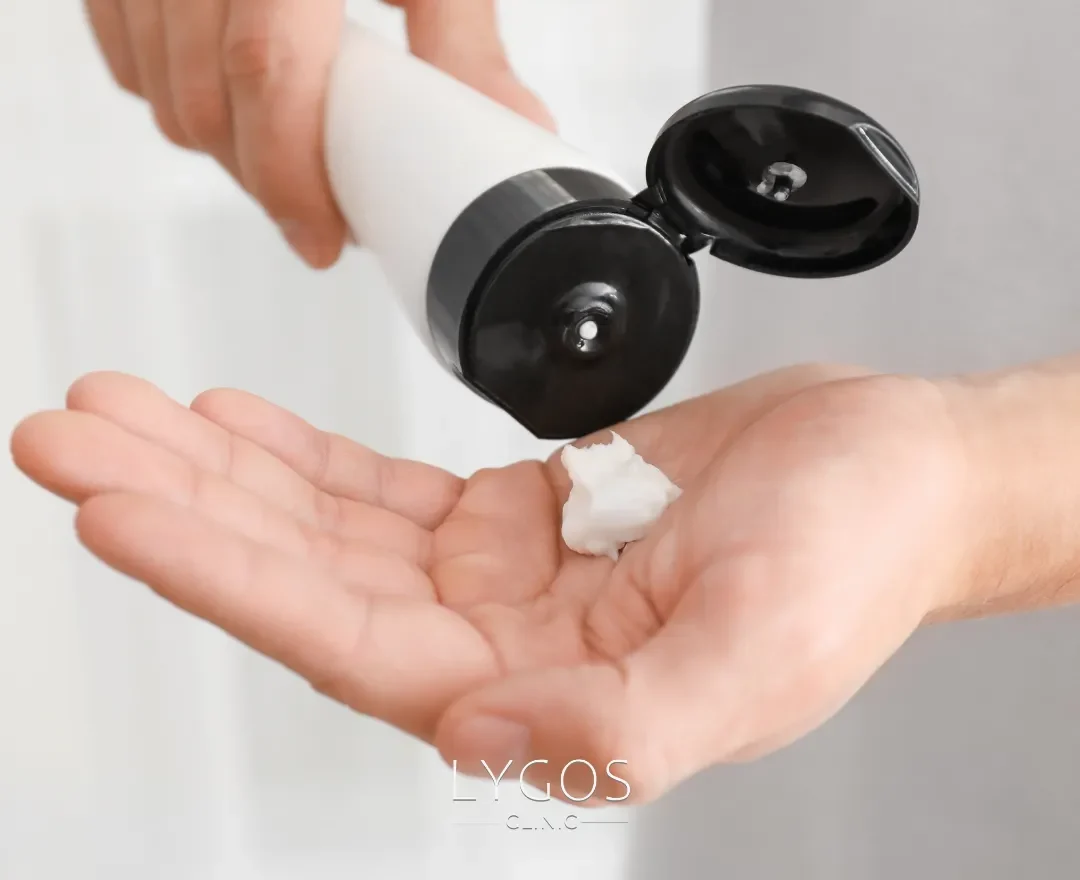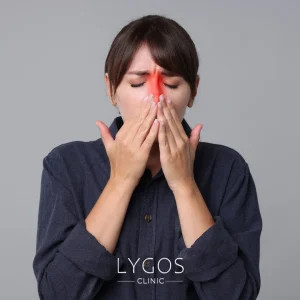Ingrown Toenail
An ingrown toenail occurs when the edge or corner of the nail grows into the surrounding soft tissue. This common issue most frequently affects the big toe. In mild cases, it can be treated at home, but professional medical care may be necessary if there is severe pain, spreading symptoms, or risk of complications. People with conditions that affect blood flow—like diabetes or arteriosclerosis—are more likely to experience complications.
Chose Your Topic
Get in Touch
Get professional treatments in Turkey at Lygos Clinic, offering effective, affordable treatments for a healthier and more aesthetically pleasing life.
You can contact us via WhatsApp and Instagram for a quick response.

What is Ingrown Toenail?
An ingrown toenail is a condition where the edge or corner of the toenail grows into the flesh surrounding the toe, usually the nail bed. While it most often affects the big toe, it can also occur on other toes.
It can be painful, and if left untreated, may lead to infection. In inflamed cases, pain becomes more intense. Other symptoms may include warmth, swelling, redness, or discharge.
Common causes include poorly fitting shoes, incorrect nail trimming, toe injuries, excessive sweating, softened skin, and fungal infections. If the nail continues to grow into the skin, it may require treatment by a specialist.
What causes Ingrown Toenails?
If a person has an imbalance between the width of the nail bed and the size of the nail, it can cause ingrown toenails. Apart from this situation, which is shown as the most important cause of ingrown toenails; improper nail cutting, genetic nail disorders, wrong shoe preferences can also worsen the situation. The following answers can also be given to the question that many people wonder, “What causes ingrown toenails?”:
-
Imbalance between the nail size and the nail bed can cause ingrown toenails.
-
Improper nail cutting, especially curved nails can cause ingrown toenails. In order to prevent this situation, which is usually seen in toenails, care should be taken to cut the nails straight.
-
Cutting nails too short can cause ingrown toenails..
-
Injuries to the toenail can also cause ingrown toenails.
-
Failure to perform manicure and pedicure applications on the nails in the right way can also cause ingrown toenails.
-
Some people's nail structure is naturally curved inwards. Nails with this structure are called “claw nails”. Stinging may occur due to claw nails.
-
Wearing tight shoes and socks can cause ingrown toenails as they compress the nails.
-
People with unusually curved toenails due to genetic or other reasons may also experience ingrown toenails.
-
Trauma, such as nail growth, can cause ingrown toenails.
How Does Ingrown Toenail Go Away?
Several approaches can help relieve ingrown toenails. Here are some effective methods:
- Wear open-toed shoes or sandals to reduce pressure.
- Keep feet dry throughout the day.
- Avoid trimming the nail until the area heals or grows out.
- Soak the foot in warm water 3–4 times a day for about 20 minutes. After soaking, gently place clean cotton or waxed dental floss under the nail to encourage it to grow above the skin edge.
- Apply an antibiotic cream (after a doctor’s approval) and cover the area with a clean bandage.
What Happens If Ingrown Nail is Not Treated?
If left untreated, ingrown toenails can impair mobility and cause severe discomfort. The most serious risk is infection, which can even spread to the underlying bone (osteomyelitis).
For individuals with diabetes or poor circulation, the condition is especially dangerous. Nerve damage may reduce sensation, making complications harder to detect. In severe cases, infection may lead to foot ulcers or even tissue death, possibly requiring amputation.


How to Treat Ingrown Toenails?
If conservative methods fail, surgical treatment may be required. Depending on severity, part or all of the nail may be removed. This is especially necessary in recurring cases or in people with conditions like diabetes.
Surgical procedure:
- The area is cleaned and disinfected.
- Local anesthesia is administered.
- A tourniquet is applied to reduce bleeding.
- The ingrown portion of the nail is removed vertically using special tools.
- In some cases, the entire nail is removed.
- A chemical solution or a heated device (cautery) may be used to destroy the nail root and prevent regrowth.
- The area is bandaged with Vaseline and sterile gauze.
If the nail regrows, it may have a different shape and structure but is unlikely to cause the same issue again.
Ingrown Toenail in Babies
Proper nail care is crucial for babies, as their fast-growing nails can easily become ingrown. Signs include redness, swelling, discharge, and pain. Babies may cry when the toe is touched or show signs of discomfort when wearing shoes or walking.
Parents should be especially cautious and consult a pediatrician at the first sign of an ingrown nail.

Ingrown Toenail on the Hand
Though less common, ingrown nails can also occur on the fingers. They can affect daily activities and cause pain. Treatment is similar to that for toes and may involve conservative or surgical methods depending on severity.
Ingrown Toenail on Foot
Feet are the most commonly affected area. Causes include moist feet, tight shoes, and improper nail trimming. Left untreated, ingrown toenails can cause infections and walking difficulties. For individuals with diabetes, the risks are even greater.

Ingrown Toenail Inflammation
Ingrown toenails can become extremely uncomfortable over time. If left untreated shortly after the ingrowth, the nail and surrounding tissues can become infected. If the inflammation of the ingrown toenail begins, the pain can become much more severe. Especially this pain may progress towards the foot after a while and cause problems such as swelling, redness and discharge.
People with diseases such as diabetes and rheumatic diseases are more affected by ingrown toenail inflammation. These people, who feel the complications of ingrown toenails even more severely, may need surgery.
In order to prevent the problem of ingrown toenail inflammation from getting worse, you should go to a specialist doctor as soon as possible. Otherwise, the problem may get bigger and bigger, causing increased pain and suffering.
Cream for Ingrown Toenail
More than one method is applied for ingrown toenail treatment. One of the most striking methods is cream. The application of cream for ingrown toenail shows 60 to 70 percent success. Especially applying creams containing antibiotics to the part where the infection occurs is very effective. However, this process should proceed under the control of a specialist physician.
Otherwise, creams applied in the wrong sizes may cause different problems. Cream is also recommended for ingrown toenails in infants. In infants, where only antibiotic creams are recommended for use, getting a doctor’s approval plays a critical role. After applying cream for ingrown toenails, the area is covered with a bandage to prevent infection.


Ingrown Toenail Before and After
A person with an ingrown toenail feels pain and soreness. The area, which is at risk of infection, may become uncomfortable after a while. Therefore, you can easily feel the difference the ingrown toenail before and after. The fact that ingrown toenails directly affect the quality of life can damage people’s habits. In particular, people who want to go out may have difficulty wearing shoes and socks.
The change that will be experienced before and after ingrown toenail should not only be considered in terms of health. Having negative effects on both health and quality of life, ingrown toenails have many effects from routine habits to feeling happy. Therefore, the comfort after treatment of ingrown toenails can be evaluated from many perspectives.
Ingrown Toenail Treatment Costs
Treatment costs vary depending on the severity of the condition, whether surgery is needed, the type of creams or equipment used, and the clinic’s facilities. Infection, if present, may increase the cost due to additional care required.
For detailed pricing and treatment options, patients are encouraged to consult with the experts at Lygos Clinic.

Get in Touch
Get professional treatments in Turkey at Lygos Clinic, offering effective, affordable treatments for a healthier and more aesthetically pleasing life.
You can contact us via WhatsApp and Instagram for a quick response.
Frequently Asked Questions About Ingrown Toenail
Orthopedic specialists typically handle toenail issues. If unavailable, a general surgeon can also provide treatment.
It can be managed with antibiotic creams. If the infection persists, minor surgery may be needed.
Symptoms like pain, swelling, and discharge may intensify. Infection can spread and become more serious.
The device’s two hooks are placed under the nail edges, then tightened slowly to lift and realign the nail. Multiple sessions may be necessary.
Mild cases may resolve on their own, but after treatment, healing typically takes 1 to 7 days, depending on severity.
BLOG

What is Sinusitis | What Are Its Symptoms?
Chose Your Topic What is Sinusitis and What Are Its Symptoms? Sinusitis is a common health issue affecting many people

Skin Cancer | Symptoms, Causes and Prevention Methods
Chose Your Topic Skin Cancer Skin cancer is one of the most common types of cancer worldwide. Prolonged sun exposure,

Testosterone Deficiency | Symptoms of Testosterone Deficiency
Chose Your Topic Testosterone Deficiency Testosterone is a crucial hormone, especially for male health. It regulates many biological processes in






